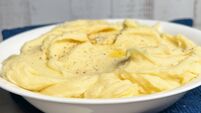How to make the perfect pizza and the common mistakes to avoid

It is possible to make perfect pizza in the comfort of your own home.
Now that we all know how to make sourdough, and understand what a precious baby bread can be, it makes sense that pizza dough can benefit from a slow rise. Of course, you can make the dough and rise it in under three hours, but a long slow ferment in the fridge overnight like in the recipe below, results in a much more flavourful and ultimately delicious pizza.





